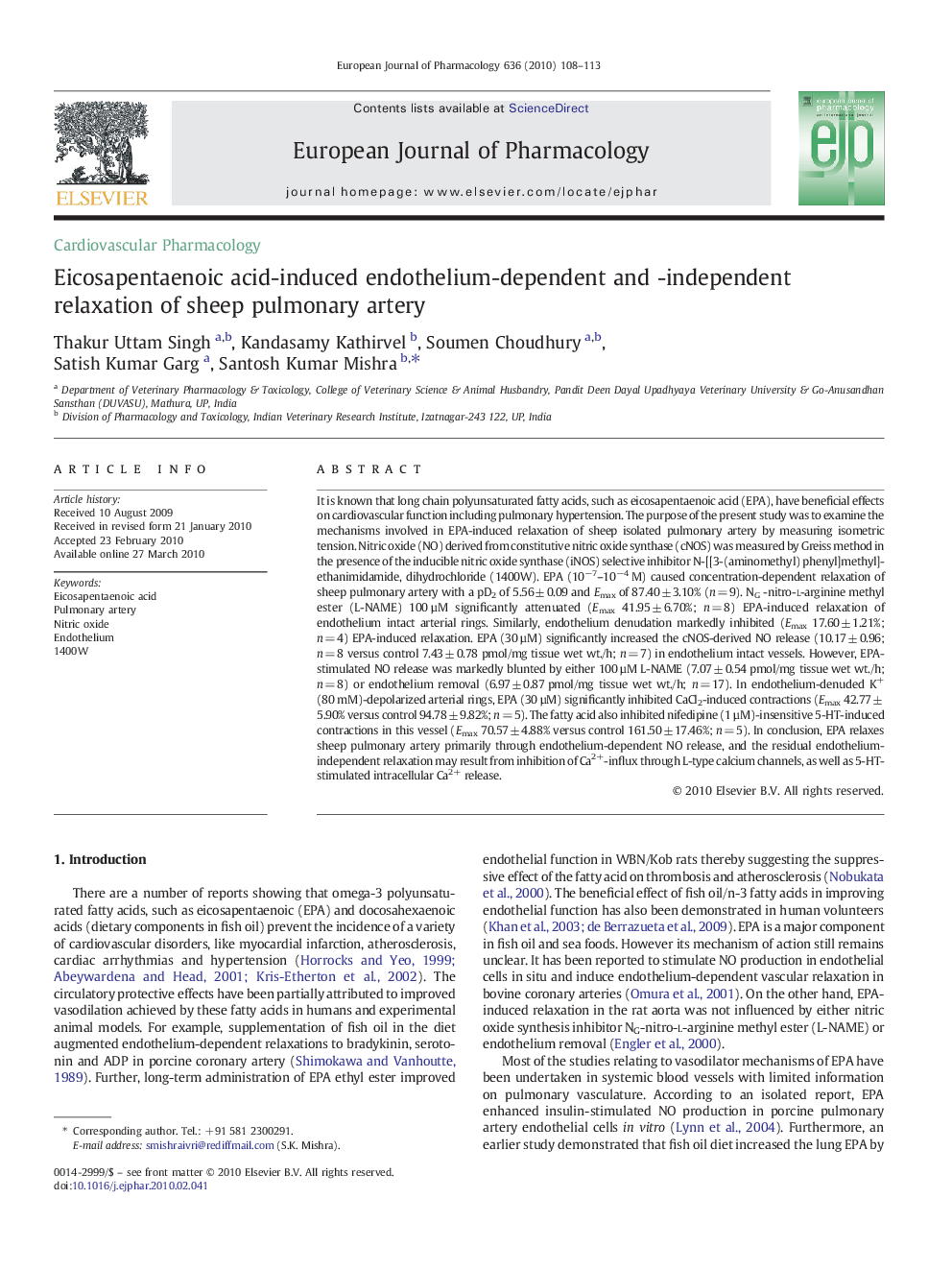| Article ID | Journal | Published Year | Pages | File Type |
|---|---|---|---|---|
| 2533511 | European Journal of Pharmacology | 2010 | 6 Pages |
It is known that long chain polyunsaturated fatty acids, such as eicosapentaenoic acid (EPA), have beneficial effects on cardiovascular function including pulmonary hypertension. The purpose of the present study was to examine the mechanisms involved in EPA-induced relaxation of sheep isolated pulmonary artery by measuring isometric tension. Nitric oxide (NO) derived from constitutive nitric oxide synthase (cNOS) was measured by Greiss method in the presence of the inducible nitric oxide synthase (iNOS) selective inhibitor N-[[3-(aminomethyl) phenyl]methyl]-ethanimidamide, dihydrochloride (1400W). EPA (10−7–10−4 M) caused concentration-dependent relaxation of sheep pulmonary artery with a pD2 of 5.56 ± 0.09 and Emax of 87.40 ± 3.10% (n = 9). NG -nitro-l-arginine methyl ester (L-NAME) 100 µM significantly attenuated (Emax 41.95 ± 6.70%; n = 8) EPA-induced relaxation of endothelium intact arterial rings. Similarly, endothelium denudation markedly inhibited (Emax 17.60 ± 1.21%; n = 4) EPA-induced relaxation. EPA (30 µM) significantly increased the cNOS-derived NO release (10.17 ± 0.96; n = 8 versus control 7.43 ± 0.78 pmol/mg tissue wet wt./h; n = 7) in endothelium intact vessels. However, EPA-stimulated NO release was markedly blunted by either 100 µM L-NAME (7.07 ± 0.54 pmol/mg tissue wet wt./h; n = 8) or endothelium removal (6.97 ± 0.87 pmol/mg tissue wet wt./h; n = 17). In endothelium-denuded K+ (80 mM)-depolarized arterial rings, EPA (30 µM) significantly inhibited CaCl2-induced contractions (Emax 42.77 ± 5.90% versus control 94.78 ± 9.82%; n = 5). The fatty acid also inhibited nifedipine (1 µM)-insensitive 5-HT-induced contractions in this vessel (Emax 70.57 ± 4.88% versus control 161.50 ± 17.46%; n = 5). In conclusion, EPA relaxes sheep pulmonary artery primarily through endothelium-dependent NO release, and the residual endothelium-independent relaxation may result from inhibition of Ca2+-influx through L-type calcium channels, as well as 5-HT-stimulated intracellular Ca2+ release.
